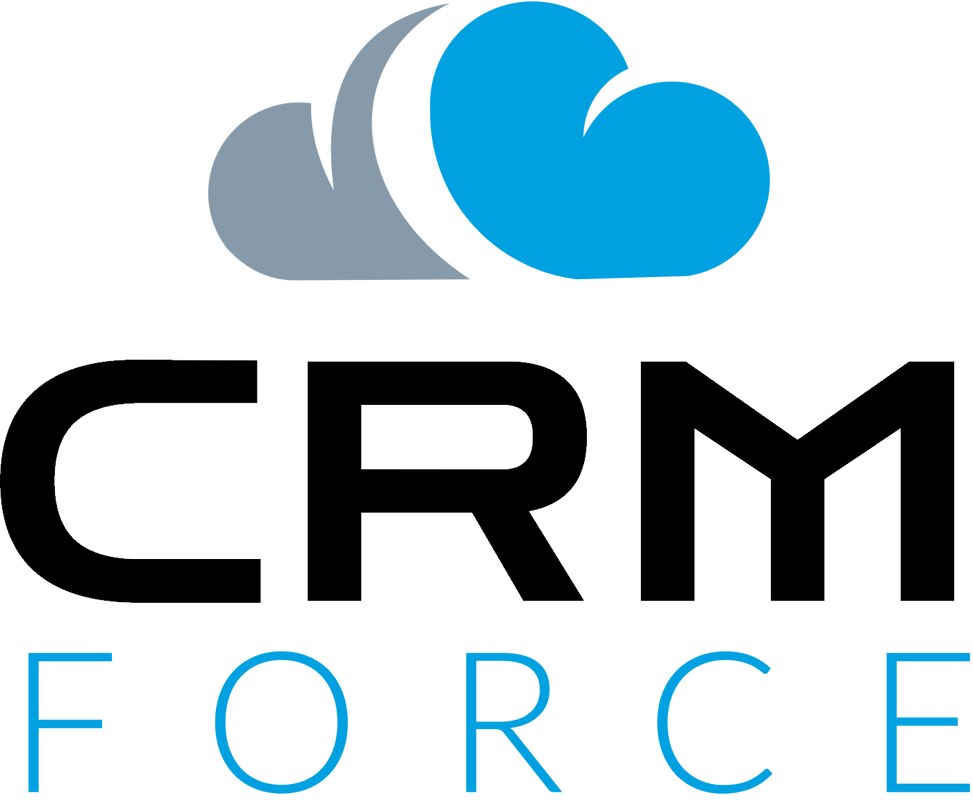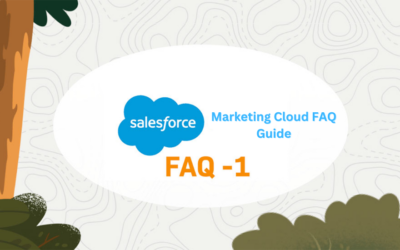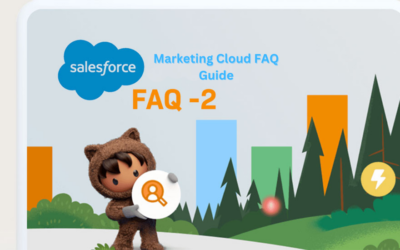Recruitment is the lifeblood of any organization, the process through which it breathes in new talent, fresh perspectives, and the potential for growth and innovation. Yet, the path to finding the perfect candidate is riddled with challenges. In this comprehensive guide, we will delve deep into the complex and often perplexing world of recruitment, dissecting the most common obstacles that HR professionals, hiring managers, and organizations encounter. Furthermore, we will provide in-depth strategies, insights, and practical solutions on how to surmount these challenges, forging a more efficient, inclusive, and successful path to recruitment.
Recruitment, as we know it today, is far more than a simple job listing and a handshake. It requires a multifaceted approach encompassing human resources expertise, technological savvy, and a commitment to diversity and fairness. The journey begins with crafting the perfect job description, a document that serves as the cornerstone of attracting the right candidates. Yet, this is just the tip of the iceberg. You must navigate the intricacies of resume screening, conduct interviews that reveal a candidate’s true potential, and uphold principles of diversity and inclusion throughout the process. Legal and compliance challenges, such as labor laws and data protection, loom on the horizon, demanding meticulous attention. And even when you’ve chosen the ideal candidate, your journey is far from over, as effective onboarding and retention strategies are essential to ensure they thrive within your organization. In this comprehensive guide, we will navigate through each of these stages, providing you with the knowledge and tools you need to recruit successfully. If you need assistance with Salesforce CRM setup and optimization, companies like CRM Force can provide valuable expertise and support.
1- Attracting the Right Candidates
1.1 Crafting the Perfect Job Description
Clarity and Specificity: Crafting a job description that’s clear and specific is essential. It should leave no room for ambiguity about what the job entails, what qualifications are required, and what expectations the company has. By being precise, you attract candidates who understand the role and can assess whether they are a good fit.
Appealing Language: Beyond being informative, a job description should engage candidates. Use language that reflects your company’s culture, values, and vision. An inspiring description can attract candidates who resonate with the company’s mission and feel motivated to apply.
Keywords for SEO: Incorporating relevant keywords is crucial, especially when posting job openings online. These keywords improve the search engine visibility of your job posting. This is a crucial aspect of modern recruitment, ensuring your job ads show up in relevant searches.
Inclusivity and Diversity: An inclusive job description is one that welcomes candidates from all backgrounds. It’s important to use language that doesn’t unintentionally discourage candidates from underrepresented groups. This encourages a diverse range of applicants and fosters a more inclusive workplace.
Accurate Representation: Transparency in job descriptions is vital. It sets realistic expectations for candidates, reducing the likelihood of mismatches and future turnover. Misleading job descriptions can attract applicants who may not be satisfied with the actual job.
1.2 Utilizing Effective Job Posting Platforms
Targeted Platforms: The choice of where to post job openings can significantly impact the quality of applicants. The key is to use platforms that align with the type of candidates you’re seeking. For example, LinkedIn might be ideal for professional roles, while creative positions might find the best candidates on niche job boards or creative social media platforms.
Budget Allocation: Most companies have a budget for job postings. It’s important to allocate this budget wisely across various platforms. Balancing free and paid channels while considering the ROI for each can be essential. This ensures you get the best candidates without overspending.
Social Media Promotion: Social media is a powerful tool for reaching potential candidates. You can create shareable content and leverage your current employees’ networks to increase the reach of your job postings. A well-placed job opening on a social platform can quickly gain visibility.
Networking and Employee Referrals: Encouraging employee referrals can be highly effective. Current employees often have connections to potential candidates, and they can provide valuable insights into the candidates’ potential fit with the company culture. Network within your organization and beyond to access a wider pool of candidates.
Data Analysis: Data-driven decision-making is crucial in recruitment. Use analytics to track the performance of your job postings on different platforms. Monitor metrics like conversion rates, click-through rates, and application rates. By analyzing the data, you can make informed decisions on where to focus your recruitment efforts.
2-Screening and Shortlisting Candidates
2.1 Sorting Through a Flood of Resumes
Applicant Tracking Systems (ATS): ATS software is a crucial tool for handling a high volume of resumes. It can automatically filter resumes based on predefined criteria, making the initial screening process more efficient and organized. An ATS can save significant time and resources.
Resume Scoring: Developing a scoring system for resumes helps prioritize candidates. Assign points to different qualifications, experiences, and other relevant factors. This system ensures that you’re focusing on candidates who align most closely with the job requirements.
Keyword Optimization: Use specific keywords related to the job within your ATS. The ATS will then scan resumes for these keywords, allowing for more precise screening. This is especially valuable when you have a specific skill set or qualifications in mind for the role.
Human Touch: While automation through ATS is efficient, it’s crucial to balance it with a human touch. Sometimes, exceptional candidates might not perfectly match the predefined criteria. Human review can catch these unique qualities that automated systems may miss.
Continuous Improvement: Regularly review and update your screening criteria based on the performance of selected candidates. This practice ensures that your screening process remains effective and relevant as the job market and company needs evolve.
2.2 The Art of Effective Candidate Screening
Structured Interviews: Structured interviews involve asking each candidate the same set of questions. This approach ensures consistency in evaluations, allowing for fair comparisons among candidates. This approach is especially valuable when multiple interviewers are involved.
Skills Assessments: For roles that require specific technical skills or expertise, conducting skills assessments is critical. These assessments provide a practical demonstration of a candidate’s abilities, which can be invaluable in making hiring decisions.
Reference Checks: Checking references is a vital part of candidate screening. Contacting former employers or colleagues can validate a candidate’s background and qualifications. It’s an opportunity to ask specific questions about the candidate’s past performance and behavior.
Behavioral Interviews: Behavioral questions ask candidates to provide examples of how they’ve handled specific situations in the past. These questions help assess a candidate’s problem-solving abilities and interpersonal skills. They provide insight into how a candidate is likely to perform in your organization.
Panel Interviews: Panel interviews involve multiple interviewers, often including potential future team members. This approach offers diverse perspectives on the candidate and provides insights into how they might fit within the team and organization.
Chapter 3- Conducting Interviews
3.1 Preparing for Successful Interviews
Thorough Understanding of Job Requirements: Before conducting interviews, it’s crucial to have a deep understanding of the job requirements. This knowledge allows you to structure the interview effectively, ensuring that you’re assessing candidates’ suitability for the role.
Setting Up a Comfortable Environment: Creating a comfortable and welcoming interview environment is essential. Candidates should feel at ease during the interview to provide their best responses. This includes considerations like appropriate lighting, temperature, and seating arrangements.
Interviewer Preparation: Interviewers should be well-prepared. They should thoroughly review the candidates’ resumes and the job description, so they can ask relevant questions. This preparation ensures a smooth and productive interview process.
Effective Time Management: Time management is crucial during interviews. Each interview should have a defined schedule to ensure you cover all essential topics and questions within the allotted time. Avoid running over schedule, as it can inconvenience candidates.
Active Listening: Interviewers should actively listen to candidates’ responses. This means not only hearing their words but also understanding their context and providing them with the opportunity to elaborate on their experiences and qualifications.
3.2 Asking the Right Questions
Behavioral Questions: Behavioral questions prompt candidates to provide examples from their past experiences. These questions help assess how candidates have handled specific situations in previous roles, offering insight into their problem-solving skills and adaptability.
Situational Questions: Situational questions present hypothetical scenarios that candidates might encounter in the new role. These questions assess how candidates would approach challenging situations and make decisions, providing insight into their critical thinking.
Open-Ended Questions: Open-ended questions encourage candidates to provide detailed, narrative responses. These questions are valuable for understanding candidates’ thought processes, communication skills, and the depth of their experience.
Technical and Skills-Based Questions: For technical roles, asking specific technical questions or requesting demonstrations of skills can be vital. These questions verify that the candidate has the necessary expertise for the role.
Culture Fit Questions: Questions about a candidate’s values, work style, and how they align with the company’s culture can help gauge cultural fit. It’s essential to ensure that a candidate will be comfortable and productive in the organization.
4- Ensuring Diversity and Inclusion
4.1 The Importance of Diversity in Recruitment
Innovation and Creativity: Diverse teams bring a wide range of perspectives and experiences to the table, fostering innovation and creativity. Diverse workforces are more likely to come up with unique solutions and ideas.
Better Problem Solving: Diversity enhances problem-solving. A variety of viewpoints allows for a more comprehensive analysis of issues and generates a broader spectrum of solutions.
Improved Employee Engagement: Employees are more engaged in an inclusive environment, as they feel valued for their individual contributions. This engagement leads to higher productivity and job satisfaction.
Enhanced Decision-Making: Diverse teams make better decisions. They consider different angles, identify potential risks, and weigh pros and cons more effectively than homogenous teams.
Broader Talent Pool: Embracing diversity in recruitment widens the talent pool, allowing companies to attract top talent from various backgrounds. This results in a more robust workforce.
4.2 Overcoming Bias in Recruitment
Recognition of Bias: Recognizing and acknowledging bias is the first step in overcoming it. Encourage self-awareness among recruiters and interviewers to identify and address their biases.
Structured Interview Techniques: Implement structured interview techniques to standardize the interview process. This minimizes the influence of subjective bias and ensures that each candidate is evaluated based on the same criteria.
Blind Recruitment: Blind recruitment involves removing personally identifiable information from resumes during the initial screening process. This minimizes unconscious biases based on factors like gender, ethnicity, or age.
Training Programs: Offer training programs to educate hiring teams about unconscious bias. These programs can raise awareness and provide strategies for mitigating bias in all aspects of recruitment.
Diversity and Inclusion Initiatives: Create initiatives and policies that actively promote diversity and inclusion. These can include diversity-focused outreach, mentorship programs, and employee resource groups.
5- Handling Rejections and Feedback
5.1 Rejecting Candidates Gracefully
Personalization: A personalized rejection message is a respectful way to acknowledge a candidate’s effort. Express gratitude for their application and, if possible, provide specific feedback or reasons for their non-selection.
Timeliness: Promptly communicate rejections. Candidates appreciate a quick response, even if it’s a rejection. Delays can damage your company’s reputation and deter potential candidates.
Constructive Tone: Maintain a constructive and positive tone in rejection messages. Emphasize that the decision was not a reflection of the candidate’s worth, but rather a specific fit for the role.
Leaving the Door Open: Some candidates may not be the right fit for one role but could be perfect for another in the future. Leaving the door open for future applications or suggesting they stay in touch can build goodwill.
Feedback Request: Offer candidates the opportunity to request feedback. This not only provides valuable insights for candidates but also demonstrates your commitment to helping them grow in their careers.
5.2 Providing Constructive Feedback
Specific Feedback: When offering feedback, be specific about the areas where the candidate excelled and where they could improve. Concrete feedback is more actionable and helpful.
Professional Tone: Maintain a professional and respectful tone in feedback conversations. Avoid criticism that could be interpreted as negative or derogatory.
Focus on Development: Emphasize that the feedback is intended to support the candidate’s development rather than criticize their performance. This fosters a more positive and growth-oriented discussion.
Two-Way Communication: Encourage candidates to ask questions and engage in a two-way dialogue during feedback sessions. This approach ensures that the feedback is well-received and promotes open communication.
Respect Candidate Privacy: Ensure that the feedback process respects candidate privacy and is in compliance with data protection laws. Maintain confidentiality and share feedback only with the candidate’s consent.
6- Navigating Legal and Compliance Challenges
6.1 Staying Compliant with Labor Laws
Equal Opportunity Employment: Comply with laws that ensure equal opportunity employment, which prohibits discrimination based on factors like race, color, religion, sex, national origin, age, and disability. Adhere to fair hiring practices and ensure your job descriptions and interview questions are non-discriminatory.
Minimum Wage and Overtime Laws: Ensure that you are aware of and adhere to minimum wage and overtime laws. Verify that compensation packages meet the minimum legal requirements and that overtime-eligible employees are paid appropriately.
Record Keeping: Maintain detailed records of all recruitment processes, including resumes, interview notes, and communication with candidates. These records can be vital in case of legal disputes or audits.
Non-Disclosure and Non-Compete Agreements: If applicable, consider the use of non-disclosure and non-compete agreements. Ensure that these documents are legally sound and protect your company’s interests without overstepping legal boundaries.
Immigration Laws: When recruiting candidates from abroad, it’s essential to be knowledgeable about immigration laws and the requirements for employing foreign nationals. Work with immigration experts if necessary.
6.2 Protecting Candidate Privacy
Data Protection Laws: Comply with data protection laws such as GDPR (General Data Protection Regulation) or CCPA (California Consumer Privacy Act). Ensure that candidates’ personal data is collected, stored, and processed in a manner that respects their privacy rights.
Consent for Data Processing: Obtain explicit consent from candidates for the collection and processing of their personal data. Clearly communicate how their data will be used and for how long it will be retained.
Data Security Measures: Implement robust data security measures to safeguard candidate information. This includes secure storage, access controls, encryption, and regular security assessments.
Transparency and Communication: Communicate transparently with candidates about the steps taken to protect their data. Respond to their inquiries about data privacy and provide access to their own data upon request.
Data Retention Policy: Develop and follow a data retention policy that outlines how long candidate data is retained and when it should be securely deleted or anonymized.
7- Onboarding and Retention
7.1 Effective Onboarding
Structured Onboarding Plans: Develop a structured onboarding plan that outlines the first few weeks or months for a new hire. Include a schedule of training, introductions to team members, and access to necessary resources.
Mentorship Programs: Implement mentorship programs where experienced employees guide new hires. This helps newcomers acclimate to the organization, understand its culture, and find support when needed.
Feedback and Assessment: Establish a system for collecting feedback from new hires during the onboarding process. This feedback can be used to continuously improve the onboarding experience.
Clear Expectations: Clearly communicate expectations and key performance indicators (KPIs) to new hires. This clarity ensures they understand their role and responsibilities from the outset.
Follow-Up and Support: Don’t consider onboarding as a one-time event. Regularly follow up with new hires to ensure they have the support and resources they need to succeed.
7.2 Strategies for Employee Retention
Career Development Opportunities: Offer opportunities for career growth and development. This can include training programs, mentorship, and clear pathways for advancement within the organization.
Work-Life Balance: Promote work-life balance to ensure that employees are not overwhelmed by their job responsibilities. This can improve job satisfaction and retention rates.
Recognition and Rewards: Recognize and reward employees for their achievements and contributions. This can boost morale and motivation to stay with the company.
Feedback and Communication: Encourage open communication and provide employees with opportunities to voice concerns or provide feedback. Act on their suggestions when possible to show that their input is valued.
Company Culture: Foster a positive and inclusive company culture that aligns with employees’ values. A welcoming, respectful culture can increase employee satisfaction and retention.
Conclusion
In the realm of recruitment, the challenges are myriad, but so are the opportunities for growth and success. Having traversed the intricate landscape of recruitment, we arrive at the destination, armed with knowledge and strategies to overcome the hurdles that this process presents. It is crucial to recognize that the modern era of recruitment extends far beyond traditional practices. Today, it is an amalgamation of technology, inclusivity, legal compliance, and ongoing employee development.
Recruitment Suggestions serve as the guiding stars that illuminate the path forward. From crafting the perfect job description to conducting interviews that uncover a candidate’s true potential, from ensuring diversity and inclusion to navigating the complex legal and compliance terrain, and finally, to onboarding and retaining top talent, these suggestions are your compass. Embracing a candidate-centric approach, staying open to continuous learning, and evolving with the ever-changing recruitment landscape will ensure that your organization thrives with the best possible team. The recruitment journey is dynamic, and by adhering to these Recruitment Suggestions, you stand poised to meet the future with a workforce that embodies excellence and the values of your organization. To learn more about how CRM Force can assist you in recruiting top CRM talent and optimizing your CRM strategies for successful drip campaigns, contact us today. Together, let’s maximize your customer engagement Contact Us today.





